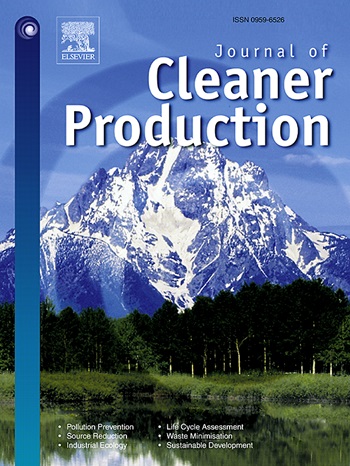Decoding carbon emissions in China's marine Fisheries: Trends, drivers, and pathways to sustainability
IF 9.7
1区 环境科学与生态学
Q1 ENGINEERING, ENVIRONMENTAL
引用次数: 0
Abstract
The sustainable development of marine fisheries is essential for China to achieve its carbon peaking goals. Balancing carbon emission reduction with the need to maintain fish production and improve sustainable management presents a significant challenge. Current research lacks comprehensive analyses of the time-space evolution of carbon emissions in relation to fishery production and their driving mechanisms. This study examined China's marine fishery development over 44 years, focusing on regional carbon emissions and intensity associated with various operation methods over the past 20 years. It also identified the driving mechanisms and contributions of the operational structure to carbon emissions. The findings revealed that while fishery production grew at an annual growth rate of 1.82 %, carbon emissions rose slower (1.26 %). The catch scale is the most critical positive driver of carbon emissions increasing (53.36 %). Spatially, southern China exhibited higher emissions compared to northern regions, with disparities in emissions widening due to operational structures and differences in regional characteristics and reduction potential. The carbon intensity of China's marine fisheries per unit of production has been significantly reduced, contributing 24.70 % of the world's seafood with only 20.32 % of CO2 over the past ten years. Outlawing energy-intensive capture methods and reducing energy consumption in mariculture have largely contributed to the reduction in emissions (−58.44 % and −37.44 %, respectively). Although intensive production systems in mariculture contribute a lot of seafood at the same emission level, they may also generate externalities such as biodiversity loss, habitat simplification and ecosystem degradation, so the need for an integrated ecosystem-based management approach such as integrated multi-trophic aquaculture should be more emphasized at this time in order to strike a balance between combating climate change and maintaining ecological sustainability. This study highlights the importance of balanced regional development, restructuring operations and optimizing fishing methods to ensure food security while advancing broader sustainable development goals. The recommendations are intended to guide the low-carbon and sustainable development of China's marine fisheries, consistent with environmental and economic goals.

解读中国海洋渔业的碳排放:趋势、驱动因素和可持续发展途径
海洋渔业的可持续发展对中国实现碳峰值目标至关重要。平衡碳减排与维持渔业生产和改善可持续管理的需要是一项重大挑战。目前的研究缺乏对渔业生产碳排放时空演变及其驱动机制的综合分析。本研究考察了中国44年来的海洋渔业发展,重点研究了近20年来不同经营方式下的区域碳排放和强度。它还确定了运营结构对碳排放的驱动机制和贡献。研究结果显示,虽然渔业生产的年增长率为1.82%,但碳排放量的增长速度较慢(1.26%)。捕捞规模是碳排放增加的最关键正驱动因素(53.36%)。从空间上看,中国南方地区的碳排放高于北方地区,但由于业务结构、区域特征和减排潜力的差异,碳排放差距不断扩大。中国海洋渔业单位产量碳排放强度显著降低,10年来贡献了全球24.70%的海产品,二氧化碳排放量仅为20.32%。取缔能源密集型捕获方法和减少海水养殖中的能源消耗在很大程度上有助于减少排放(分别为- 58.44%和- 37.44%)。尽管在相同的排放水平下,海水养殖集约化生产系统贡献了大量海产品,但它们也可能产生诸如生物多样性丧失、栖息地简化和生态系统退化等外部性,因此,此时应更加强调以综合多营养水产养殖等基于生态系统的综合管理方法的必要性,以便在应对气候变化和维持生态可持续性之间取得平衡。这项研究强调了平衡区域发展、调整经营结构和优化捕捞方法的重要性,以确保粮食安全,同时推进更广泛的可持续发展目标。这些建议旨在指导中国海洋渔业的低碳和可持续发展,与环境和经济目标保持一致。
本文章由计算机程序翻译,如有差异,请以英文原文为准。
求助全文
约1分钟内获得全文
求助全文
来源期刊

Journal of Cleaner Production
环境科学-工程:环境
CiteScore
20.40
自引率
9.00%
发文量
4720
审稿时长
111 days
期刊介绍:
The Journal of Cleaner Production is an international, transdisciplinary journal that addresses and discusses theoretical and practical Cleaner Production, Environmental, and Sustainability issues. It aims to help societies become more sustainable by focusing on the concept of 'Cleaner Production', which aims at preventing waste production and increasing efficiencies in energy, water, resources, and human capital use. The journal serves as a platform for corporations, governments, education institutions, regions, and societies to engage in discussions and research related to Cleaner Production, environmental, and sustainability practices.
 求助内容:
求助内容: 应助结果提醒方式:
应助结果提醒方式:


